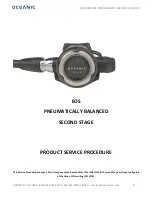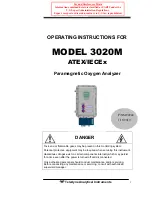
Page 22
AR-G2/AR 2000ex/AR 1500ex Getting Started Guide
Key Rheometer Components
The main components of the rheometer are described below. If you have a good understanding of the
design and function of each component, it will make efficient use of the rheometer easier. This section
describes, in detail, the design and functions of the:
•
Casting
•
Ball slide
•
Air thrust bearing (AR 2000ex/AR 1500ex)
•
Magnetically levitated thrust bearing (AR-G2)
•
Radial air bearings
•
Rotational mapping
•
Motor
•
Encoder
•
Normal force transducer (AR-G2/AR 2000ex)
•
Electronics
•
Front panel
•
Smart swap
•
Auto GapSet Mechanism
Casting
The body of the rheometer is a single-piece aluminium casting, consisting of a base and column. The cast-
ing is an important component of the rheometer, as it needs to be rigid to axial and torsional stresses,
robust, and capable of being machined to high precision and accuracy to ensure correct alignment of the
other components of the instrument. Computer Numerical Control (CNC) machining is used to ensure con-
centricity, flatness and parallelism in the measuring system when attached.
Ball Slide
The instrument head assembly containing the motor, bearing and optical encoder is mounted on a stiff,
linear motion, precision ball slide guide. The ball slide is mounted within the instrument column, and a
motor and optical encoder are located in the base of the casting to drive the ball slide screw, moving the
instrument head vertically, and to measure its position.
Содержание AR-G2
Страница 1: ...Revision R Issued January 2011 Getting Started Guide AR G2 AR 2000ex AR 1500ex Rheometers...
Страница 12: ...Page 12 AR G2 AR 2000ex AR 1500ex Getting Started Guide This page is intentionally blank...
Страница 16: ...Page 16 AR G2 AR 2000ex AR 1500ex Getting Started Guide This page is intentionally blank...
Страница 54: ...Page 54 AR G2 AR 2000ex AR 1500ex Getting Started Guide This page is intentionally blank...
















































